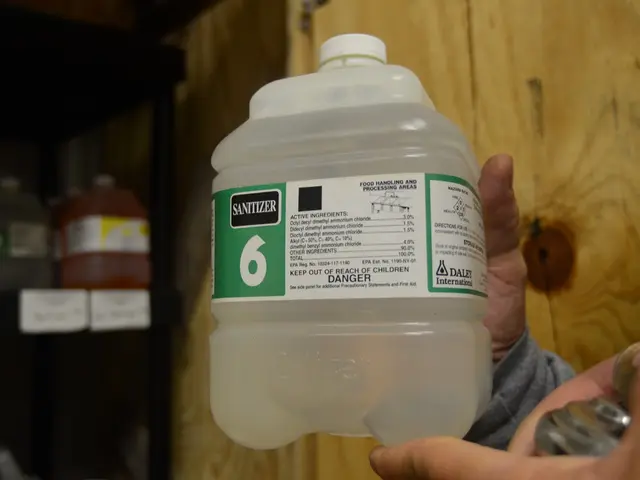Twelve strategies supported by scientific evidence for reducing anxiety through exercising the vagus nerve
The vagus nerve, often referred to as the "wanderer nerve" or the "main communication cable" for the parasympathetic nervous system, plays a crucial role in mental health. This long nerve, which runs from the brain down to the gut, is a major component of the body's "rest and digest" system, regulating heart rate, mood, and inflammation.
Low vagal tone, a condition characterised by an underactive parasympathetic nervous system, is linked with heightened anxiety and a persistent stress response. Fortunately, there are several vagus nerve stimulation (VNS) techniques that can help relieve anxiety by activating the parasympathetic nervous system, promoting relaxation, and improving emotional regulation.
One such technique is cold-water face immersion. Splashing cold water on the face or using an ice roller for 30 seconds can stimulate the vagus nerve, providing immediate anxiety relief. Similarly, massaging the upper part of the ear (cymba concha) can offer similar relaxation effects, as a study found.
Non-invasive VNS approaches, such as transcutaneous auricular vagus nerve stimulation (taVNS), have shown promise in reducing anxiety symptoms and emotional distress in clinical studies, with fewer side effects compared to surgical methods. For example, taVNS significantly improved anxiety and depression scores in patients with globus pharyngeus, indicating its potential as a safe neuromodulation therapy for anxiety relief.
In addition to clinical devices, simple techniques like gargling, rhythmic movement, and sensory grounding exercises can stimulate the vagus nerve and enhance stress resilience. These methods engage muscles and sensory pathways connected to the vagus nerve to promote parasympathetic activation and reduce anxiety symptoms.
Other VNS techniques for anxiety relief include deep diaphragmatic breathing, controlled laughter, humming, 4-7-8 breathing, OM chanting, orienting to safety, and yoga, particularly yin yoga with twists and forward folds.
Improving vagal tone through vagus nerve stimulation can help with anxiety by restoring nervous system balance and fostering a calmer physiological state. Low vagal tone can lead to feelings of being constantly on edge, anxiety, digestive issues, difficulty staying focused, and trouble falling or staying asleep. Signs of low vagal tone include feeling anxious even when nothing is obviously wrong, difficulty staying focused on the present moment, mind automatically jumping to worst-case scenarios, feeling disconnected from your body or emotionally numb, trouble falling or staying asleep, still feeling wired or tense long after a stressful situation has ended, and persistent tiredness that rest doesn't seem to help.
Moderate exercise and safe place meditation are also effective in stimulating the vagus nerve, promoting long-term anxiety resilience and overall mental health. In stressful situations, moving the eyes to the right and left, laughing, and visualizing a peaceful, secure environment while focusing on breathing can help reset the vagus nerve and activate the parasympathetic nervous system, offering immediate anxiety relief.
In conclusion, vagus nerve stimulation techniques support anxiety relief by modulating autonomic nervous system balance, decreasing overactive stress responses, and improving mood regulation through enhanced parasympathetic activity. A well-functioning parasympathetic nervous system means a person feels safe rather than stressed or anxious.
Engaging in cold-water face immersion, massaging the upper part of the ear (cymba concha), or following simple techniques like gargling, rhythmic movement, and sensory grounding exercises can help stimulate the vagus nerve, thereby providing relief from anxiety. Regular practice of non-invasive VNS approaches, such as transcutaneous auricular vagus nerve stimulation (taVNS), has been shown to reduce anxiety symptoms and emotional distress, highlighting its potential as a safe neuromodulation therapy for anxiety relief.








